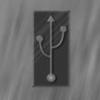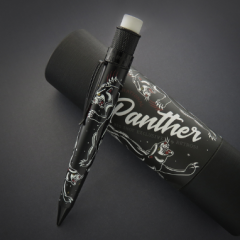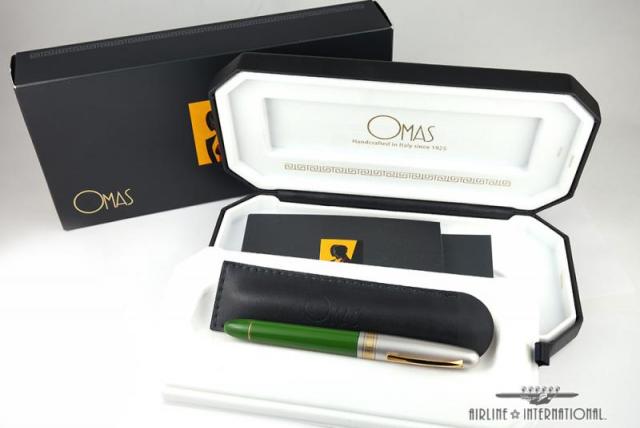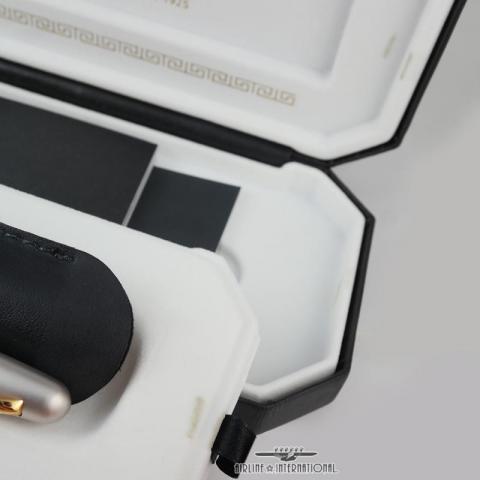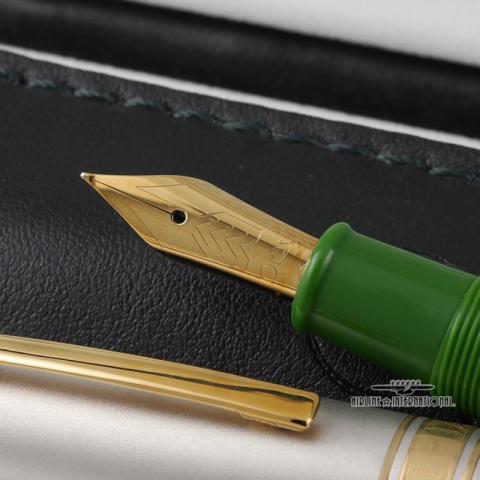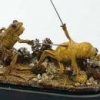Search the Community
Showing results for tags 'history'.
-
I once read a similar post about fountain pens on FPN. Since there are many dip pen users and collectors in FPN, I thought it would be interesting to know what is the oldest one in their possession. My humble collection consists of just three dip pen holders. One is a modern wooden straight holder and the other two are the oldest ones. I know this one is old but I couldn't figure out the exact time period. It's not very clear, but upon close inspection one can see "Calcutta" (old name of Kolkata, capital city of West Bengal state in India) imprinted on it. The second dip pen is much more dipped into history. It was gifted to me by one of my father's friend (in fact, the first one is also his gift). It belonged to his grandfather, Manoranjan Sengupta, who happened to be an Indian freedom fighter and a companion of the famous Indian revolutionary "Bagha" Jatin. (Here is the link of the Wikipedia page on Bagha Jatin. You will also find the name of Manoranjan Sengupta mentioned in the 'Death' section. https://en.m.wikipedia.org/wiki/Bagha_Jatin ) If Manoranjan Sengupta himself didn't inherit the holder from one of his predecessors then I think it might be from the early decades of 1900. I am not sure about the material of this pen. It feels somewhat like buffalo horn. Another possibility is laquer (must be hundreds of layers if it is really so) on wood. I am pretty proud of this holder. It thrills me when I hold it in my hand knowing that it was once used by a great man who sacrificed his life for the freedom of my nation. Now it's your to turn to tell me about the oldest dip pen in your collection.
-
https://www.houmatimes.com/obituaries/clifford-cliff-harrington/ https://www.delhommefuneralhome.com/obituaries/Clifford-Harrington/ Rest in Peace Mods: Please transfer to another forum, if not appropriate but Cliff was a well respected dealer at Pen Shows
-
When did sailor start their anniversary pens ? How often did they produce one ? Did they all have specialty nibs ? Pictures and references are always a plus !
- 1 reply
-
- anniversary
- sailor
-
(and 1 more)
Tagged with:
-
Is anyone aware when did sailor start making specialty nibs ? And did they introduce the whole lineup of nibs or did they do it gradually ? References are always a plus !
- 13 replies
-
- specialty nib
- history
-
(and 2 more)
Tagged with:
-
I have acquired a small collection of Sailor pens, and I'm looking for some information on the history of Sailor pens in order to identify them. I know that a lot of their pre-40's information was lost during the war, but I'm amazed at how little information I can turn up about their models from the 60's to the present. I've been able to find historic catalog pages and blogs about Pilot and Platinum, but I'm struggling with Sailor (apart from the 1911 model). Does anyone have any catalogues of vintage Sailor pens (particularly from the 60's, 70's or 80's)? Or suggestions for a blog/website with more info?
-
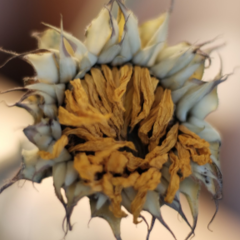
Iron Meet Gall: The Secrets Behind Ink In The 18Th Century - Historical Writing Series Part 2
peroride posted a topic in Inky Thoughts
https://youtu.be/P582srfq_14 Fantastic fun chemistry! I enjoyed that Brian uses red wine as an anti-microbial putting a different spin to the term vintage ink I want what he's drinking, err.. writing -
George Harrison and George Bradford were Birmingham-trained tool makers brought to the US to start up the Washington Medallion Pen Company factory in NYC in 1856. In 1862 they bought the dies and stamps and machinery from the Washington Medallion Pen Co. and started making the pens under contract. They also formed Harrison & Bradford and started making pens under their own name as well. In late 1863 they realized the original design patent for the Washington Medallion Pen had run out so in 1864 they started making the Harrison & Bradford Washington Medallion Pen, and were promptly sued along with Eberhard Faber, their sole distributor. They lost. They continued to make Harrison & Bradford pens together until 1875 when George Harrison left the company to join John Turner, another Birmingham-trained steel pen tool maker who had helped start up Esterbrook's first factory, to found Turner & Harrison Pen Company. George Bradford continued producing Harrison & Bradford pens by himself in their Mt. Vernon, NY factory until about 1880 when he started marketing his own 1879 patent pen design under his own name. In 1881 he sold the factory and his patent to Miller Brother's Cutlery who wanted to get into the pen business. Bradford stayed and was given the role of Superintendent of Pen Production for Miller Brothers.
- 4 replies
-
- steel pens
- dip pens
-
(and 2 more)
Tagged with:
-
I have the house to myself for a time and so I'm taking this once-in-a-lifetime opportunity to spread out and go through my collection of steel dip pens and update my inventory. (a Herculean task). I'm coming across pens I have forgotten all about. Here's one with a semi-interesting story I thought I might share. Most people know Milton Bradley as the famous board game manufacturer. That was their first main product and is still their main line of business. But over the years since their founding in 1860, they have produced other items at various times. One line of goods, which was near and dear to Milton himself, was a series of school supplies and educational aids geared toward the new Kindergarten movement in the late 1860's and onward. Milton became interested in the ideas behind early education and began making a whole line of educational supplies which he mostly gave away. This line continued from the 1870's up to about WWI, when it was reduced in scope. The five pens I have are Milton Bradley No. 2 School Pens. They're a little rusty and rough, but I've never seen any others. (cue five other people posting whole salesman's sample kits and advertising posters). The pens themselves are nothing to write home about, but the story and their rarity make them something interesting to me and I thought I'd share.
-
"The eyes of the world are upon you." -Dwight Eisenhower's message to the troops of the invasion force This year marks the 75th anniversary of the historical day that was the turning point for the Allied forces in World War II. Made to commemorate the 50th anniversary of D-Day at Normandy. This pen is limited to only 5300 fountain pens, signifying the number of ships that crossed the English Channel on the dawn of June 6th 1944. The body is crafted from a gorgeous military green resin with gold vermeil trimmings. This Omas D-Day Fountain pen c.1994 is in exceptional condition and has been vault kept. It comes with authentic documents and presentation boxes. It has a Fine gold plated nib. It is NOS (New Old Stock). The pen has NOT been used and is in exceptional condition. The clip has light patina and the display box does have some light discoloration which is shown in the last image. We currently have two Fountain Pens of these, one with a Medium Nib, and another one in a Fine Nib. Please feel free to contact us for more inquiries, or if you are interested. orders@airlineintl.com
-

How Many Make Copies Of Letters Written To Keep Track What Was Written?
kealani posted a topic in The Write Stuff
Due to senior "forgetfulness", memory issues, I was thinking of making copies of letters before I send them out (snail mail correspondence) so that I remember what I've written, and help me write more thoughtfully. How many of you make copies of written letters to keep track of what was sent? Or do you just, "remember". Do you have a system for snail mail writing? Thanks everyone for your help. -
Does anyone know which inks Diamine was producing in the 90s (red inks in partcular)? Novel research. I had a character writing in Syrah, but that's wrong. Inks from the 80s which were still being produced in the 90s would also be awesome, but honestly, any inks at all definitely produced in the period would be great to know.
-
I've decided to try to collate the information found on the internet and my knowledge on Blackbirds. The guide is pretty basic and many statements are based on assumptions and guesses. Hopefully someone finds it still interesting. https://www.penexchange.de/forum_en/viewtopic.php?f=10&t=6332
- 7 replies
-
- british mabie todd
- blackbird
-
(and 3 more)
Tagged with:
-
According to the Birmingham Daily Post in 1865. Not sure I quite believe it, considering how little hesitation the manufacturers had to come out with new designs. Perhaps some of the innovations were difficult or expensive to make. That was known to happen with some designs, and until someone could figure out how to manufacture it more cheaply, they never were built. And for those like me not familiar with the old English money system, Shilling = 12 pence Half a Crown = 2 Shillings 6 pence, or 30 pence (2.5 shillings) So, they went from 2.5 pence a pen, to .083 pence a pen. When they were going for 2.5 pence a pen in England, Williamson in the US was making pens in Baltimore from 1808 to about 1820 and selling them for $1 each. A generation later, in 1857, Washington Medallion was selling their mass-produced pens for 1.04-cents each ($1.50 per gross). 15 years later, Esterbrook sold their Falcon for half that cost.
- 1 reply
-
- steel pens
- history
-
(and 1 more)
Tagged with:
-
After having re-read the Jean Esterbrook thread, I was inspired to do some delving of my own back in the Old Country. I reached out to the fine folks at the Liskard History Museum in the town in Cornwall where Richard was from and asked if they had any information. I received a nice note back with some interesting tidbits which I thought I'd compile into what else I've figured out and share it with you all here. The first thing that pops up is that the Esterbrooks really liked "Richard" and "Mary" as names. The Richard Esterbrook who was the founder of the company here in the US, is often called Richard Esterbrook Sr. and his son, who was first to the New World and brought his dad over, is commonly known as Richard Esterbrook Jr. The confusion begins to set in when you realize that there was a Richard Esterbrook before "Sr." and another Richard Esterbrook after "Jr." who was also often called "Jr." So, let's start in Liskeard Cornwall. A small town in Northeast Cornwall, just about a 30 minute drive west of Plymouth. In 1778, the first Richard Esterbrook was born in the parish and married Mary Anne Oliver. At some point he moved just down the road to the small hamlet of St. Austell. It was here that Richard (Sr.) Esterbrook was born in 1813. At some point they moved back to Liskeard where Richard (Sr.) married Mary Date from Travistock in West Devon, (where the Esterbrooks are first found in the 17th-century). By 1841, Richard Esterbrook (Sr.) was running a Bookshop/Stationer at 20 Pike St. in Liskeard. The building, just down from the museum, is currently a travel agency. He was still there in 1851, but gone by the 1861 census, though he still owned the bookshop. In the collection of the museum are posters dated 1844, 1848 and 1850 showing Esterbrook as the printer. This means that Esterbrook was like most stationer/bookshops of the time, he also did printing. He eventually sold the bookshop in 1866, the same year in which he dissolved the original partnership with Cadbury and Bromsgrove, and formed R. Esterbrook & Co. with his son, Richard Jr. who had just turned 30 that year. (Sr. also voted in local Liskeard elections in 1861 and 1863/64. So, he hadn't completed severed ties with this home, despite becoming an American Industrialist.) Speaking of Richard Jr., he was born in Liskeard in 1836. The nice person at the museum found the deed of sale for the shop in 1866 and said that someone, no identification of who or when, had placed a note in along with the deed which says, "Richard junior was apprenticed to a well known pen and nib manufacturer and eventually emigrated to America and set up business on his own account ….with great success.. The firm he founded, still in existence, the Esterbrook Corporation, is a firm of international repute but particularly in the USA of the standing of the Parker Pen and Shaffer Pen companies." The reference and comparison to Parker and Sheaffer tell me that this was a 20th-century, fountain pen reference, perhaps in the 40's? There's no indication where the info on the apprenticeship came from. But it leaves a key question unanswered. Was that Richard (Sr.) who was really a Jr, or Richard Jr. who was really Richard the Third? (can understand why you'd not want to be known as that) If we look at the date, apprenticeships traditionally started when one was 13 or so. That would have been c. 1826 for Richard Sr., or c. 1849 for Richard Jr. My guess is that it was Richard Jr., not Richard Sr. In 1826, the pen industry was in its real infancy in Birmingham. Only a few years earlier, Gillott was tempering his pens in a cast-iron skillet and selling them in boxes he packed personally. It's highly unlikely that someone would have come all the way from Cornwall to do an apprenticeship with a relatively new and small industry way up in Birmingham. But by 1849, the industry is growing tremendously, and it's much more likely for this to happen. This could also help explain why Richard Jr. would have left instead of sticking around to take over the family business. It was not uncommon for apprentices, after finishing their proscribed time, from taking off and seeing other ways of doing the same work, or looking for fresh fields away from where they did their apprenticeship. John Turner, later founder of Turner & Harrison, and possibly one of Richard Esterbrook's skilled workmen from Birmingham, went to France after his apprenticeship. So, Richard Jr., assuming he actually finished his apprenticeship, would have completed his time around 1855. Just in time for him to come to Canada and the US and try and get his father to come over. Fortunately for us, his father left his shop behind, but, prudent man that he was, he didn't sell it right away. He kept a second basket for some of his eggs until it was clear the new venture was going to work after all. By 1858 they had their factory in Camden and offices and warehouses in Philadelphia. The rest is history, that has been told elsewhere. I just wanted to fill in some of the early history that has been so foggy up to now, at least for me. There are still many gaps, like how Richard Sr. ended up with a bookshop, or if Richard Jr. did finish an apprenticeship, and if it may have been some of his friends who were the skilled workmen his father supposedly brought from Birmingham? I always assumed that being in the stationery business, Richard Sr. had contacts in Birmingham, which is how he got the workmen. Now, it's possible that Jr. came to the US to find out how pens were made here, realized that we didn't really know what we were doing, and that there were only a couple of people making pens here, so had the idea to bring Birmingham here and start their own factory along "modern lines." If I find out more, I'll let you know. Andrew
- 9 replies
-
- esterbrook
- history
-
(and 1 more)
Tagged with:
-
I just put up a page on my blog listing research resources for Philadelphia, including a ton of links to online Philadelphia Directories. Something I thought y'all might find interesting is a diagram of the Esterbrook factory in Camden, NJ from 1885. It's from a Sanborn map used by insurance companies. The red buildings are made of brick, and the yellow ones are wooden-framed. The location is currently a parking lot across Cooper St. from Camden City School District Office. It was in the middle of the block, along Cooper, between Front and Delaware, on the south side of the street.
-
I've finished a new post on individual pen makers. The first one was Peregrine Williamson, who've I've written about before. He was most definitely first. Charles Atwood came second-ish, but not much is known about him. The one I just finished was Josiah Hayden, maker of Hayden's Premium Pens in the early-mid 1840's. Hayden also made gold pens for a while before selling those works off to Dawson, Warren & Hyde who made a lot of gold pens up until the 1860's. I find this lost history of early industry quite interesting. And Hayden was another of the early makers who were forgotten not that many years later when the first histories of the US pen industry were first jotted down. I'm trying to bring their stories back when possible. I've also added a helpful Table of Contents that helps find the topics you're interested in on the blog. You can find it by clicking on the link on the left, or just go here.
- 2 replies
-
- josiah hayden
- massachusetts
-
(and 2 more)
Tagged with:
-
I've finished a new post on individual pen makers. The first one was Peregrine Williamson, who've I've written about before. He was most definitely first. Charles Atwood came second-ish, but not much is known about him. The one I just finished was Josiah Hayden, maker of Hayden's Premium Pens in the early-mid 1840's. Hayden also made gold pens for a while before selling those works off to Dawson, Warren & Hyde who made a lot of gold pens up until the 1860's. I find this lost history of early industry quite interesting. And Hayden was another of the early makers who were forgotten not that many years later when the first histories of the US pen industry were first jotted down. I'm trying to bring their stories back when possible. I've also added a helpful Table of Contents that helps find the topics you're interested in on the blog. You can find it by clicking on the link on the left, or just go here.
- 16 replies
-
- josiah hayden
- massachusetts
-
(and 2 more)
Tagged with:
-
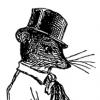
British Patent Information - Resources, And Need Help With Details
AAAndrew posted a topic in Pen History
As far as I can tell, the British patents are not as accessible as the US patents. I may be missing some great resource, and if so, please tell me. Otherwise, I've gathered the following resources from Google Books. I am focusing on British patents to about 1860, but have gathered resources for up to 1850, then 1852 - 1869 and 1881. Unfortunately, these indices get you the patent number, date and patentee, but no real details around the patent. If anyone knows of a way, short of visiting the British national archives in person, to get the details, or even a good summary of these patents, please let me know. So, for patents up to Oct1852 start with these two indices of titles. "Pens" are under "Stationery" so they're in volume two. I'm going to list the patents I've found from this volume related to pens (I'm focused on metallic pens, but I've included others that may be of interest on FPN). Titles of Patents of Invention, Chronologically Arranged: From March 2, 1617 (14 James I.) to October 1, 1852 (16 Victoriae) Vol 1 up to 5th june 1823 Titles of Patents of Invention: Chronologically Arranged from March 2, 1617 (14 James I.) to October 1, 1852 (16 Victoriæ), Part 2, Issues 4801-14359 For those patents for 1852 on, they were published in yearly pamplets. The patent numbers changed to be the year+number. Google books has some of the indices for these years after Oct. 1852. Here are some of the resources on a year-by-year basis. Look in the front to find on what page the pens, pencils etc.. category is found. There are some gaps in the years. I have not found the subject matter indices for 1862, 1865, 1870-1880 yet. They may be out there, if so, let me know. Subject-matter Index of Patents Applied for and Patents Granted 1852 https://books.google.com/books?id=OA1HAQAAMAAJ Subject-matter Index of Patents Applied for and Patents Granted 1853 https://books.google.com/books?id=n_bHSOv4E0MC Subject-matter Index of Patents Applied for and Patents Granted 1854 https://books.google.com/books?id=kQX501VYA2AC Subject-Matter Index Of Patents Applied for and Patents Granted For the Year 1855 https://books.google.com/books?id=cq05AQAAMAAJ Subject-Matter Index Of Patents Applied for and Patents Granted For the Year 1856 https://books.google.com/books?id=c605AQAAMAAJ Subject-matter Index of Patents Applied for and Patents Granted 1857 https://books.google.com/books?id=8n1w3mAER1IC Subject-Matter Index of Patents Applied for and Patents Granted, for the Year 1858 https://books.google.com/books?id=7K05AQAAMAAJ Subject-Matter Index of Patents Applied for and Patents Granted 1859 https://books.google.com/books?id=Ca45AQAAMAAJ Subject-Matter Index of Patents Applied for and Patents Granted for the Year 1860 https://books.google.com/books?id=ia45AQAAMAAJ Subject-matter Index of Patents Applied for and Patents Granted 1861 https://books.google.com/books?id=156Fj-WntwcC Subject-matter Index of Patents Applied for and Patents Granted 1863 https://books.google.com/books?id=Tf8VGpFN-4MC Subject-matter Index of Patents Applied for and Patents Granted 1864 https://books.google.com/books?id=PsfuvWKnbuQC Subject-matter Index of Patents Applied for and Patents Granted 1866 https://books.google.com/books?id=0uomv_waIGsC Subject-matter Index of Patents Applied for and Patents Granted 1867 https://books.google.com/books?id=IvPMOMGbLt8C Subject-matter Index of Patents Applied for and Patents Granted 1868 https://books.google.com/books?id=_ltMtuunDScC Subject-matter index of patents applied for and patents granted 1869 https://books.google.com/books?id=M9bJzZjzuc4C Subject-matter Index of Patents Applied for and Patents Granted 1881 https://books.google.com/books?id=56NkqczPHOUC I'm cross posting this list, and will keep it updated, out on my steel pen blog. https://thesteelpen.com/ -
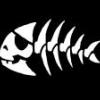
Book - On The Ossie - Tasmania And The Global Fountain Pen Industry
DuncanIdaho posted a topic in Market Watch
I thought this book might be of interest to those who are into the history of things related to fountain pens. https://www.fullersbookshop.com.au/event/ossie-nic-haygarth/ On the Ossie Tasmania and the global fountain pen industry! For a time in the early 1900s The Waratah and Adamsfield districts held the world monopoly on osmiridium. An alloy more valuable than gold (and used to tip gold nibs), Tasmanian osmiridium became a signatory to startling world events as well as making household fortunes. -
Crane Stationery Creative Director Uses 30 Year Old Montblanc
BlkWhiteFilmPix posted a topic in Montblanc
Last week the Boston Globe published an interview with Crane & Co. creative director John Segal, who mentions a 30 year old Montblanc pen his father gave him. http://postscript.crane.com/paper-habits-boston-globe/ Happy reading, and may this inspire ...- 2 replies
-
- montblanc
- vintage pens
- (and 8 more)
-
The pen cited above has "PAT.PENDING" stamped on the barrel. Can this fact help to determine a date range of likely manufacture? I appreciate any information that someone may be able to supply.
-
Good Morning, im a student from Germany. Yesterday i visited my Grandpa an he gave me the top of a pen. I dont know what it is called in English... I want to know from when this part is because he told me it is from his father. I can just read Conklin 3 Toledo on the one site. Ive searched for a compareable part on google Just the top seems to be sharper.... Can you help me? Steven
-
Hi all, Sorry if this is common knowledge, but I recently came across a picture that shows JFK using what looks to be a Parker 45 cap activated ballpoint. I'm not an expert in Parker, pens however, so I can't be sure. I read somewhere that while it has long been thought that JFK preferred Jotters as his handy-everyday pen (usually to be given out as mementos), it's more likely that they were first 45s which then might have become Jotters. Anybody have any more insight or information? I know the pen does not make the man (rather vice versa), but I've always found it super cool to know what pens politicians/highly visible public figures use in their everyday lives -- away from the ceremonial Townsends and Mont Blancs. Here's the pic: http://66.media.tumblr.com/0663faabfb721f46e7981cfcdff4cac5/tumblr_n8maavQ5hv1qa2j8co3_1280.jpg
- 4 replies
-
- jfk
- presidential pens
-
(and 2 more)
Tagged with:
-
Identification And History Of Hartman Pen
AndrewJ posted a topic in Fountain & Dip Pens - First Stop
Hi Can anyone tell me anything about Hartman pens, for example this one http://www.ebay.co.uk/itm/Hartman-Golden-Pearl-Restored-near-MINT-fully-serviced-/232010600742?hash=item3604e8d126:g:94kAAOSw7XZXhRi~ The seller has identified it by a "faint imprint on the barrel". Your thoughts would be appreciated. Thanks-
- hartman
- fountain pen
-
(and 2 more)
Tagged with:






